The Lumads of Mindanao consist of the few remaining tribes in the country who have preserved their indigenous culture through the only means it can be done—by living on their ancestral lands. If the current trend of killing and driving them away from the mountains continue, there may not be many of them left.
In the past four weeks alone, nine Lumads and a Lumad educator have been killed in the most brutal fashion. Emerito Samarca, head of the awarding-winning school ALCADEV, was found with his throat slit inside a classroom, while tribal leaders Dionel Campos and Bello Sinzo were shot in front of their neighbours and loved ones in Sitio Han-ayan in Lianga, Surigao del Sur last September 1.
If President Aquino had his way, he would probably have kept silent over these spate of killings. In fact, he only responded to the issue when asked during a media forum about what he intended to do about the killings. His response was at once defensive and dismissive (“There is no campaign to kill Lumad people”), and too vague to contain any force or meaning (“There is a campaign to go after everybody who commits these crimes regardless of who they are”). The message is clear, however, that he does not intend to do anything about it. Worse, the President did not even express grief, nor promise justice for the slain Lumads.
To be clear, the perpetrators of Lumad killings are members of paramilitary groups created by the Armed Forces of the Philippines (AFP) to aid in the counter-insurgency campaign against the New People’s Army (NPA). The perpetrators are members of the military themselves who kill civilians in the name of counter-insurgency. In Pangantucan, Bukidnon, five Manobos were executed by members of the Philippine Army’s 1st Special Forces Batallion last August 18. The military initially reported them to be NPA casualties—except that a survivor surfaced to tell of how soldiers shot his family members, including his 70-year old father. Two of the “Pangantucan 5” are minors, including a 13-year old boy. The AFP insists that the victims tested positive for nitrate—without pointing out the fact that this compound is not only found in gunpowder, but in fertilizers as well.
In the same ludicrous attempt to wash their hands off the blood from killing Lumad civilians, the military tries to dissociate themselves from paramilitary groups. But as Surigao del Sur governor Johnny Pimentel has pointed out, it is very clear that these groups are well-armed with military weapons such as Baby Armalites and Bushmasters, and can only be “under the control and supervision” of the AFP. They are seen inside Army camps. Their killing sprees—such as that in Sitio Han-ayan—are accompanied by military operations that drive Lumads away from their homes. (At present, thousands live in deplorable conditions in evacuation camps, a full-blown humanitarian crisis pretty much ignored by the national government.)
Even the AFP Eastern Mindanao admits that Lumads are very much the focus of their counter-insurgency operations, as 90 per cent of the NPA’s guerilla base are in Lumad communities. So the question is not so much whether there is or isn’t a government policy to kill Lumads—the hand of Pres. Aquino’s counter-insurgency campaign Oplan Bayanihan is imprinted all over these killings. The question now is, who benefits from these?
According to the group Katribu, of the 68 indigenous peoples who were killed under the Aquino administration, 53 were Lumads. Most of them were members or leaders of organizations that resist mining companies that encroach on their ancestral lands—such as the family of Dagil Capion, a B’laan leader in South Cotabato who opposed Sagittarius Mines and whose pregnant wife Juvy and two sons were gunned down by the military last 2012 in a supposed “encounter.”
Only a few weeks before Samarca was killed, he had joined an International People’s Mining Conference in Manila. Data from the conference reveals that under the Philippine Mining Act, the number of large-scale mines in the country have steadily increased from 16 to 46 today. Many of these mines operate in the resource-rich but strongly defended ancestral lands of the Lumads.
So if government policy was to encourage encroachment and plunder in the lands of the Lumads, a similar policy to stop Lumads who resist is in fact logical, and is not such a far stretch of the imagination as the President and the AFP would like us to believe.
FILIPINO VERSION
Ang patakaran ng pagpatay sa mga Lumad
Iilan na lamang ang natitirang Lumad ng Mindanao na nangangalaga sa kanilang katutubong kultura sa pamamagitan ng pangangalaga sa kanilang lupaing ninuno. Lalo pa silang mababawasan kung ipagpapatuloy ang nangyayari ngayong pagpatay at pagpapalayas sa mga Lumad mula sa kanilang lupain.
Sa loob lamang ng apat na linggo, siyam na Lumad at isang edukador ng mga Lumad ang pinaslang sa pinakabrutal na paraan. Ginilitan ng leeg at natagpuang patay si Emerito Samarca, ang direktor ng kinikilalang paaralang ALCADEV. Binaril naman ang mga katutubong lider na sina Dionel Campos at Datu Juvello Sinzo sa harap ng kanilang pamilya at komunidad sa Sitio Han-ayan sa Lianga, Surigao del Sur noong Setyembre 1.
Kung masusunod lamang si Pangulong Aquino, malamang ay mananahimik na lamang siya sa mga pagpatay na ito. Pero napilitan siyang sumagot nang tanungin siya sa isang media forum kung ano ang magiging aksyon niya sa mga pagpaslang sa Lumad. Depensibo agad ang kanyang tugon (“Walang kampanyang pagpatay sa mga Lumad”), at masyadong malabo para magkaroon ng bisa (“May kampanya para habulin ang sinumang gumawa ng mga ganitong krimen maging sino man sila”). Gayunman, malinaw ang mensahe na wala siyang balak gawin dito. Ni hindi man lamang nagpahiwatig ng dalamhati o nangako ng hustisya para sa mga napaslang na Lumad.
Malinaw na mga miyembro ng grupong paramilitar ang may kagagawan ng pagpatay sa mga Lumad. Binuo ng Armed Forces of the Philippines (AFP) ang mga grupong paramilitar na ito para katulungin nila sa kontra-insurhensya laban sa New People’s Army (NPA). Mga militar din mismo ang pumapatay sa mga sibilyan sa ngalan ng kontra-insurhensya. Sa Pangantucan, Bukidnon, limang Manobo ang pinaslang ng mga miyembro ng 1st Special Forces Battalion ng Philippine Army noong Agosto 18. Unang inulat ng militar na ang mga napatay ay mga NPA—hanggang lumitaw ang isang nakaligtas na nagkuwento kung paano walang-awang binaril ang kanyang mga kamag-anak, kabilang ang kanyang 70-taong gulang na ama. Dalawa sa “Pangantucan 5” ay mga menor de edad, kabilang ang isang 13-taong batang lalaki. Iginiit ng AFP na positibo ang mga biktima sa nitrate—pero hindi sinabing matatagpuan din ang nitrate sa fertilizer at hindi lang sa pulbura.
Sa tangka nitong maghugas ng kamay sa mga pagpatay sa Lumad, pilit na ihinihiwalay ng AFP ang sarili mula sa mga grupong paramilitar. Pero mismong ang gobernador ng Surigao del Sur na si Johnny Pimentel ang nagsabing armado ang mga ito ng de-kalibreng armas pang-militar gaya ng Baby Armalite and Bushmaster, at siguradong “nasa ilalim ng kontrol at superbisyon” ng AFP. Nakikita rin ang mga grupong paramilitar sa mga kampo ng militar. Kasabay ng pagpatay ng mga paramilitar ang mga operasyong militar ng AFP na nagpapalayas ng komunidad gaya ng nangyari sa Sitio Han-ayan. Sa kasalukuyan, libu-libo ang nabubuhay sa miserableng kondisyon sa mga evacuation camp—at masasabing isa na itong humanitarian crisis na patuloy na pinababayaan ng pambansang gobyerno.
Inamin mismo ng AFP Eastern Mindanao na pokus ng kanilang mga operasyong kontra-insurhensya ang mga Lumad dahil 90% anila ng baseng gerilya ng NPA ay nasa mga komunidad ng Lumad. Kaya’t hindi kuwestyon kung patakaran ba o hindi ng pamahalaan ang pagpatay sa mga Lumad— sa katunayan, nakabakas ang Oplan Bayanihan, ang kontra-insurhensyang kampanya ni Pangulong Aquino, sa mga pagpatay na ito. Ang kuwestyon ngayon ay sino ang nakikinabang sa mga pagpaslang?
Ayon sa grupong Katribu, 53 sa 68 katutubong Pilipino na pinatay sa ilalim ng administrasyong Aquino ay Lumad. Karamihan sa kanila ay mga miyembro o lider ng mga organisasyong tutol sa malawakang pagmimina na umaagaw sa kanilang lupaing ninuno–gaya ng pamilya ni Dagil Capion, isang lider ng B’laan sa South Cotabato na tumutol sa Sagittarius Mines. Pinaslang ng mga sundalo ang nagdadalang-tao na si Juvy Capion at kanyang dalawang anak na lalaki noong 2012, sa pinapalabas na isang “engkuwentro.”
Ilang linggo bago pinaslang si Samarca, dumalo siya sa isang International People’s Mining Conference na ginanap sa Maynila. Ayon sa mga datos na nilabas ng kumperensyang ito, tumaas ang bilang ng malalaking pagmimina sa bansa mula 16 hanggang 46 dahil sa Philippine Mining Act. Matatagpuan ang marami sa pagmiminang ito sa mayayamang lupain ng mga Lumad, na matapang nilang ipinagtatanggol bilang kanilang lupaing ninuno.
Kung patakaran ng gobyerno ang paghikayat ng pandarambong ng mga lupain ng Lumad, lohikal lamang na may kaparehas itong patakaran para pigilan ang mga Lumad na tumututol dito. Hindi ito kathang-isip lamang, gaya ng gustong ipaniwala sa atin ng Presidente at ng AFP.

![The Lumads of Mindanao consist of the few remaining tribes in the country who have preserved their indigenous culture through the only means it can be done—by living on their ancestral lands. If the current trend of killing and driving them away from the mountains continue, there may not be many of them left. In […]](https://www.altermidya.net/wp-content/uploads/2019/09/emerito-samarca-bnw1-e1441512478318.jpg)
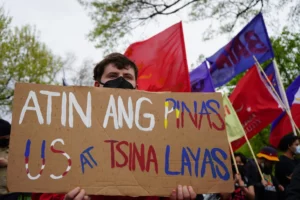
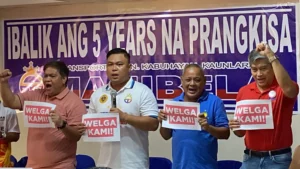
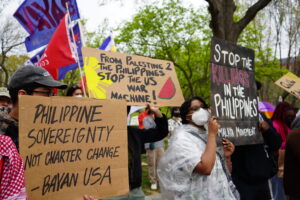
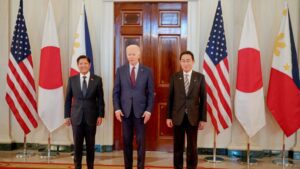
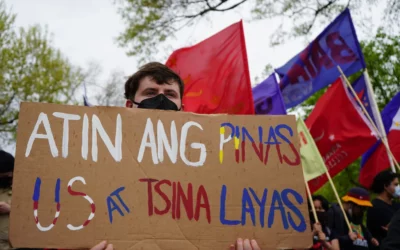
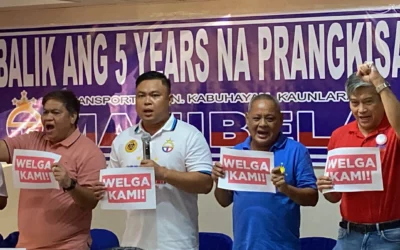
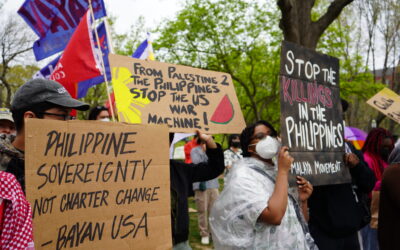
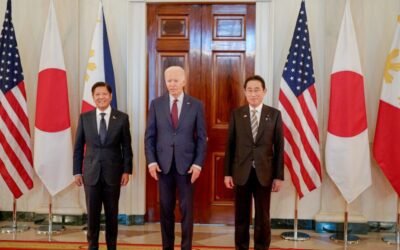
0 Comments